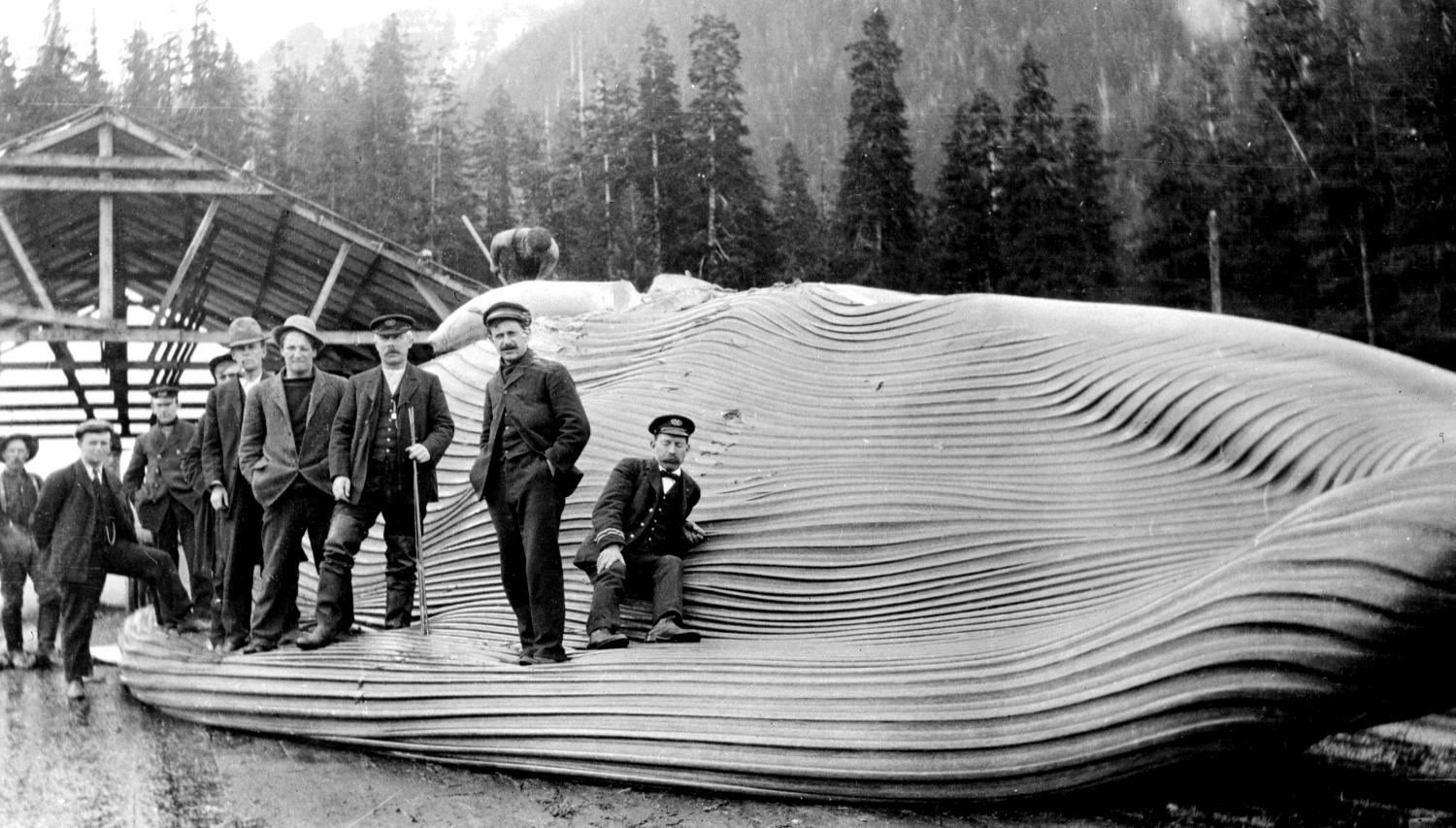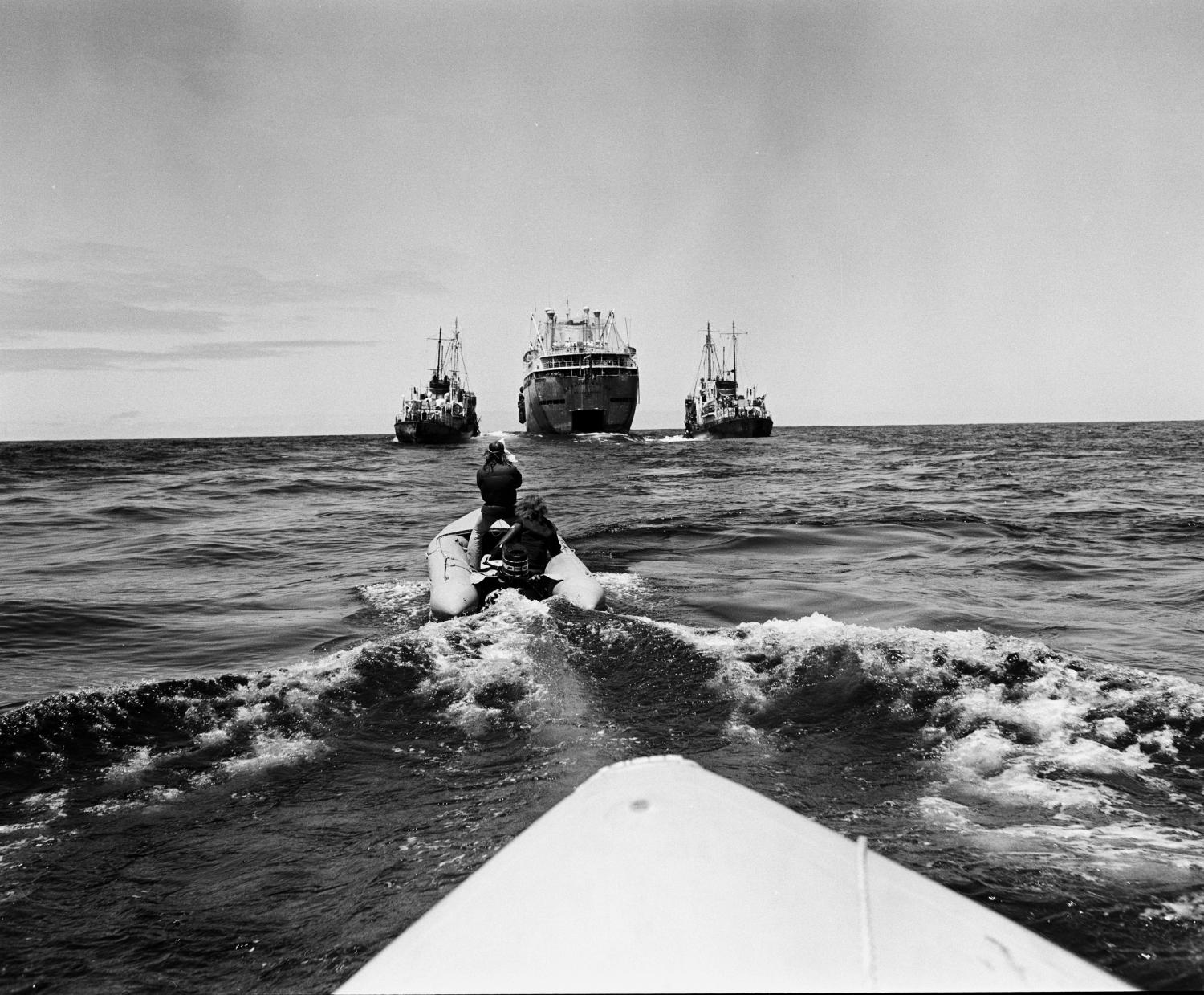Commercial Whaling Ends
Years of unsustainable whaling had pushed some whale species to the brink
Date: 1967
The Nuu-chah-nulth, a group of 15 nations along the west coast of Vancouver Island, had hunted whales for thousands of years before settlers arrived. Whaling was not only a means of sustenance, but a key part of the Nuu-chah-nulth’s culture, belief system and social hierarchy. The dangerous hunt was a sacred activity that demanded the chief, who led the hunt, participate in several intensive rituals involving fasting, prayer and oo-simch, a spiritual cleansing routine that some Nuu-chah-nulth still practice before fishing, hunting and other traditional activities.
The Nuu-chah-nulth, like their relatives to the south, the Makah or Qwiqwidicciat, commonly hunted humpbacks, but grey and right whales were also pursued. And on occasion chiefs even hunted speedy orcas, often as a public display of bravery. Besides eating the nutrient-rich meat and blubber, communities made use of other parts of the whale, including carving bones into tools and using sinew to make ropes.
The arrival of settlers would come to permanently disrupt this age-old practice. By the mid-1800s, European and American whalers were operating up and down the West Coast, driven by an international demand for oil and other whale products that were used to make fuel, soap, animal feed, fertilizer and explosives. Like the Nuu-chah-nulth, commercial whalers initially used hand-thrown harpoons to hunt slower species like grey, right and sperm whales. Humpbacks were also killed and hauled for processing at appropriately-named whaling stations like Blubber Bay on Texada Island and Whaletown on Cortes Island. By 1900, commercial whalers had depleted local whale populations to the point that there were few grey and right whales left in the North Pacific.
However, this didn’t stop commercial whalers. Instead, new steam-powered ships and explosive harpoons propelled the industry to kill even more. In the early 1900s, new whaling stations, where the marine mammals were processed, popped up on both coasts of Vancouver Island. Meanwhile, further technological advancements, including the introduction of telegraphs in the 1920s, made whaling even more efficient. But by the 1930s, governments began to introduce stricter regulations, requiring countries to declare their annual catches and placing special protections on vulnerable species like right and grey whales. Then came World War II, and commercial whaling in British Columbia halted altogether. From 1944 to 1948, no whales were killed.
After the war, commercial whalers used bigger boats and incorporated radar and aerial reconnaissance into their hunting. However, the postwar era of legal whaling in B.C. was short-lived. In 1967, the province’s last whaling station in Coal Harbour, on the north end of Vancouver Island, closed. From 1948 to 1967, more than 10,000 whales had been killed. Many species were on the verge of extinction and remain so today. Still, Soviet and Japanese whalers continued to operate in B.C.’s offshore waters.
It was around this time that Vancouver became a hub for ecological activists. Paul Spong, a neuroscientist from New Zealand, became a leading voice in the fight against foreign commercial whaling. Eventually, Vancouver-based environmental organization Greenpeace took up the cause and even confronted Soviet whaling boats from small dinghies. In 1982, the work of activists culminated in the International Whaling Commission, a global regulatory body, announcing a worldwide moratorium on commercial whaling. The ban came into effect in 1986. However, countries like Japan, Norway and Iceland continue to hunt. And though some species like the humpback whale have seen their numbers bounce back, others remain close to extinction, now threatened by a loss of habitat and food.
Sources:
1. Bramham, Daphne. The Last Continent: Whaling Continues despite the Global Ban. The Vancouver Sun, 14 Feb. 2018, vancouversun.com/news/national/the-last-continent-whaling-continues-despite-the-global-ban.
2. Colby, Jason. “Cetaceans in the City: Orca Captivity, Animal Rights, and Environmental Values in Vancouver.” Animal Metropolis: Histories of Human-Animal Relations in Urban Canada, Feb. 2017, pp. 285–308., doi:10.2307/j.ctv6gqv8c.16.
3. Coté, Charlotte. Spirits of Our Whaling Ancestors: Revitalizing Makah and Nuu-Chah-Nulth Traditions. Langara College, 2017.
4. Flower, Charles. Between the Harpoon and the Whale. The New York Times, 24 Aug. 1975, timesmachine.nytimes.com/timesmachine/1975/08/24/76830267.pdf?pdf_redirect=true&ip=0.
5. Harkin, Michael. “Whales, Chiefs, and Giants: An Exploration into Nuu-Chah-Nulth Political Thought.” Ethnology, vol. 37, no. 4, 1998, doi:http://biophilosophy.ca/Teaching/4160materials/Harkin.pdf.
6. The History of Whaling and the International Whaling Commission (IWC). WWF, 5 June 2005, wwf.panda.org/?13796%2FThe-History-of-Whaling-and-the-International-Whaling-Commission-IWC.
7. History of Whaling in British Columbia. B.C. Cetacean Sightings Network, wildwhales.org/threats/whaling/.
8. Humble, Kate. B.C. Whaling – an Uncomfortable History. Victoria News, 7 Jan. 2015, www.vicnews.com/opinion/b-c-whaling-an-uncomfortable-history/.
9. Keen, Eric. “B.C. Whaling (Back When They Were Just Big Fish).” Bangarang, Feb. 2014, doi:https://rvbangarang.files.wordpress.com/2014/01/bcwhaling.pdf.
10. Monks, Gregory G., et al. “Nuu-Chah-Nulth Whaling: Archaeological Insights into Antiquity, Species Preferences, and Cultural Importance.” Arctic Anthropology, Vol. 38, no. No. 1, 2001, pp. 60–81.
11. Part of Our Past - Commercial Whaling. Tofino Heritage Museum, www.tofinomuseum.com/index.php/11-blog/26-part-of-our-past.
12. Pollon, Christopher. You Never Forget the Smell. Hakai Magazine, 28 Jan. 2020, www.hakaimagazine.com/features/you-never-forget-the-smell/.
13. Weyler, Rex. Greenpeace Gets a Name. The Tyee, 10 Sept. 2004, thetyee.ca/Citizentoolkit/2004/09/10/GreenpeaceGetsName/.
14. Zelko, Frank. “The Whale That Inspired Greenpeace.” OUPblog, Oxford University Pres, 22 Sept. 2013, blog.oup.com/2013/09/greenpeace-origin-killer-whale-skana/.




